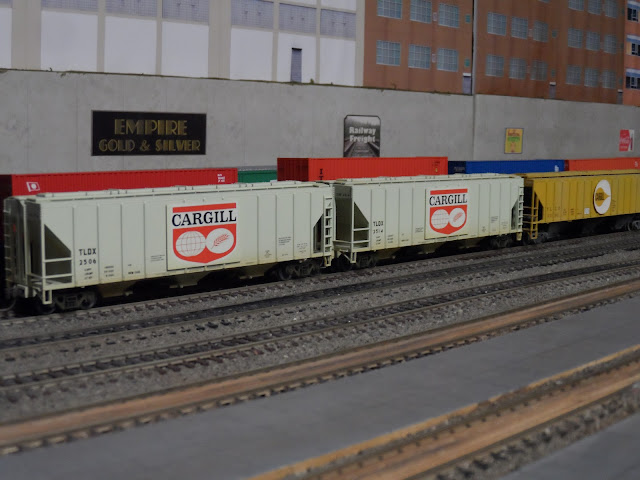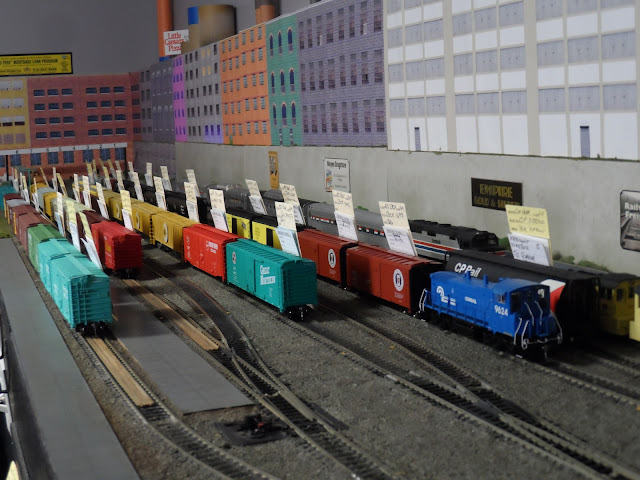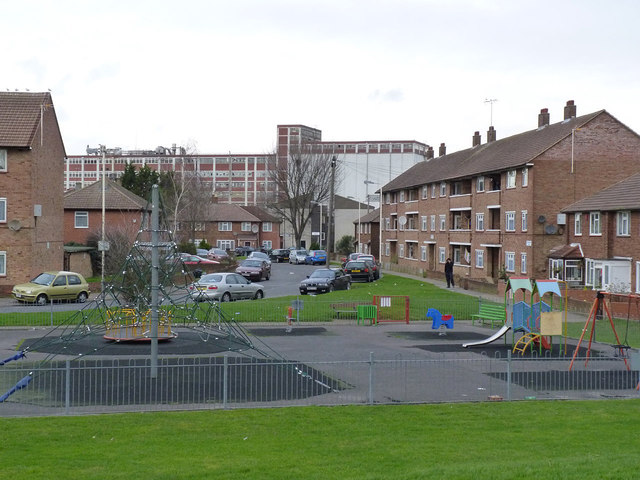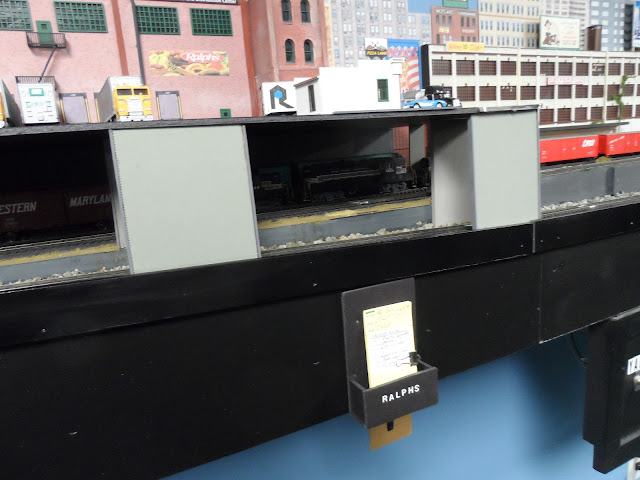Greetings All,
Examining New Industries and Freight Traffic
The Quaker Oats Company
Today we'll take a look at the potential rail traffic that will be needed and handled by the Empire Belt RR to service their newest customer, the Quaker Oats Company. We'll discover why riboflavin invaded the mind a model railroader working on setting up layout operations
Using Actual Ingredients to Determine Freight Cars Needed
Original Instant Oatmeal
Whole grain oats mainly from Canada, calcium carbonate, salt, reduced iron. Sounds simple enough for the freight car fleet.
Freight Cars Needed For Production:
Covered hoppers for the whole grain oats mainly from Canada, calcium carbonate and salt and reduced iron.
Boxcars for bulk materials, packaging materials, shipping pallets, and equipment necessary to grind, toast and move the oats throughout the factory.
Boxcars for shipment of the finished product.
Apples & Cinnamon Instant Oatmeal
Whole grain rolled oats, sugar, dehydrated apples, natural and artificial flavor, salt cinnamon, calcium carbonate, citric acid, guar gum, malic acid, niacinamide, reduced iron, vitamin A palmitate, pyridoxine hydrochloride, riboflavin, thiamin mononitrate, folic acid, caramel color. This might explain all the tank cars!!
"Quaker Oats Rail Yard" by fgv5g8 is licensed under CC BY-ND 2.0. To view a copy of this license, visit https://creativecommons.org/licenses/by-nd/2.0/?ref=openverse.
Freight Cars Needed For Production
Covered hoppers for the whole grain oats mainly from Canada, calcium carbonate, salt, reduced iron, sugar, cinnamon, citric acid.
Boxcars for bulk materials, packaging materials, shipping pallets, and equipment necessary to grind, toast and move the oats throughout the factory.
Mechanical Refrigerators for the dehydrated apples?
Tank Cars? needed for guar gum, malic acid, vitamin A palmitate, riboflavin, folic acid, caramel color which are part of the B vitamins and soluble.
Boxcars for shipment of the finished product.
LIFE Cereal Option
LIFE is a breakfast cereal produced by the Quaker Oats Company. Introduced in 1961, the cereal has a brown, checked square pattern and mainly consists of whole grain oat flour, corn flour, sugar, whole wheat flour, calcium carbonate, salt, baking soda, tocopherols (for artificial preservation), and B vitamins.
"2019-02-15 03 29 48 A bowl of Cinnamon Life cereal in the Franklin Farm section of Oak Hill, Fairfax County, Virginia" by Famartin is licensed under CC BY-SA 4.0. To view a copy of this license, visit https://creativecommons.org/licenses/by-sa/4.0/?ref=openverse.
Freight cars needed for production
Pretty much the same as the oatmeal production with the addition of whole wheat flour, corn flour, whole grain oat flour and tocopherols. The flour options are what appeals to me as it better suits my covered hopper fleet of Cargill hoppers and others.
Sample Cargill Elevator Locations
Oats: Dawson Creek Elevator, Dawson, British Columbia
Cargill 'S' Pool Elevator, Buffalo, NY.
Salt: Montreal, Canada
Whole Wheat Flour: Cargill 'S' Pool Elevator Buffalo, NY. Bloomingburg Elevator, Bloomingburg, Ohio
Empire Grain Elevator, West Mill, NY
Corn Flower: Blair Elevator, South Omaha, Nebraska
Whole Grain Oat Flower: Rock Ridge Elevator, Rock Ridge, NJ.
The Cargill Fleet
Pullman Standard PS-2 4740
16 post covered hoppers
PS delivered 330 of these cars to Cargill in 1967 numbered 7227-7556.
Pullman Standard delivered twenty five of these PS 4427 low side cars to Cargill in 1963-1964. The writing to the left of the Cargill herald states "When empty return to agent CNW RR South Omaha, Nebraska"
The Cargill Blair Elevator in South Omaha handles yellow corn which I'll take to be corn flour that is an ingredient in LIFE cereal. Perfect!!!Other rolling stock to be assigned to service Quaker
Assorted covered hoppers from the existing fleet include APRR, EBRR, PC and many others that can be used in Quaker service
Toronto, Hamilton & Buffalo Railway 40' boxcars of bulk sugar seem like a good fit for the 40' boxcars siding. The TH&B 40'ers could also be used to transport finished products.
I have several PS covered hoppers like this Soo Line 6845 that I use for shipping sugar and they'd be right at home at Quaker.
Boxcars can be from the Empire Belt Fleet, parent road NYC/PC and interchange partners. Increased Per Diem freight cars are also good candidates for this service.
Boxcars can be from the Empire Belt Fleet, parent road NYC/PC and interchange partners. Increased Per Diem freight cars are also good candidates for this service.
In December 2024 I attended another sale at Trainmaster Models and picked up several freight cars for Quaker service. This Evergreen Freight Car Corporation 50' plug door boxcar will be leased by the EBRR.
Prepping the Fleet
Freight cars to service the Quaker Plant are set up in Terminal Yard for the adding and adjustment of waybills to existing and some new rolling stock.
The Empire Belt RR Adds An Engine
An old favorite has been brought out of retirement and sold to the EBRR which plans to use this H16-44 to service the Quaker Plant. Note the EBRR lettering under the road number.
We'll cut it here for today and pick it up in our next entry where we'll make the first revenue runs and see how that worked out.Additional Reading
Thanks for reading!!!
See you tomorrow!!!





















































